Today, we are going to be discussing antibiotics for dogs. We’ll talk about the types, the classes, the uses, the side effects – basically, everything about it.
Antibiotics are great inventions that have turned the lives of the entire mankind around. But it’s not limited to humans alone, pet health has also seen significant improvement with the invention of antibiotics.
The advent of antibiotics means that virtually no living being has to die a senseless death anymore. At least, not as a result of infectious diseases.
However, science has shown that these antibiotics are getting a tad bit ineffective for various reasons. A chief reason being that microorganisms are getting more resistant to these antibiotics just by being exposed to them over a long period of time.
We know this for humans. But do animals, especially dogs, also have this same experience? Are antibiotics for dogs also getting ineffective too? And do these antibiotics have the same side effects in man as in their best friends? What about human antibiotics? Can they be used on dogs?
We will get to answering all these questions in a bit. In fact, we will start at the very beginning…
Table of Contents
What Causes Infections in Dogs?
Dogs, like every other living being, are prone to catching infections at some point in their lives. In fact, when it comes to infections, dogs and humans pretty much come down with the same things.
It’s worthy of note to mention here that infections are very different from diseases.
According to wiki, infection is the invasion of an organism’s body tissues by disease-causing agents, their multiplication, and the reaction of the host tissues to the infectious agents and the toxins they produce.
On the other hand, also according to wiki, a disease is any condition that results in the disorder of a structure or function on an organism that is not due to any external injury.
So, you see? They are different. Infections may or may not lead to diseases. And diseases may or may not be caused by infections.
So, back to what we were saying. Dogs and humans suffer more similar infections than diseases. For this reason, many feel it’s okay to use human antibiotics on dogs. Is that right? And is it even effective? We will eventually answer that.
But for now, let’s look at the different groups of microorganisms that can cause infections in dogs. You should find a lot of similarities between us and dogs here.
Different Groups of Disease-Causing Microorganisms in Dogs
Infections and diseases can be caused by a host of different microorganisms called pathogens.
These microorganisms are divided into 4 broad categories. There are the bacteria, the viruses, the fungi, and the protozoa.
Although we will be focusing on the bacterial group today, it wouldn’t hurt to find out one or two things about the three other groups before focusing on bacteria.
Viruses
Viruses are itsy bitsy parasites that are about a hundredth the size of a bacterium cell. One thing to know about them – they cannot exist outside a living cell.
Normally, an antiviral would be recommended for a viral infection but they do not actually kill the virus. They simply prevent viruses from growing and replicating.
Antivirals are not common in veterinary medicine, so, often, your vet would simply treat the secondary bacterial infections that occur.
Examples of antivirals include: Pradofloxacin (Veraflox), Cephalexin (Keflex), and Ampicillin.
Fungi
Examples are yeasts and molds. They cause quite deadly diseases such as blastomycosis and not so deadly ones like ringworm. When fungi get into your dog’s body, they eat up building materials of living cells as well as the waste of dying cells. They also kill off growth tissue as well.
When antifungals are prescribed, they kill off the fungi so that injured tissues can be rejuvenated. Examples of antifungals include: Griseofulvin (Fulvicin), Ketoconazole (Nizoral), Fluconazole (Diflucan).
Protozoa
These are parasites that are much bigger than bacteria and viruses. They come with motility structures and mouths with which they move around the body and eat your dog’s food respectively. They cause diseases like Giardiasis, coccidiosis (gastrointestinal diseases), and haemobartonellosis (a fatal blood disease).
Some anti-protozoals kill the protozoans while others destroy their DNA or inhibit cell reproduction and growth.
Now, we will dwell on our main guys for today…
Bacteria
Bacteria are really tiny creatures and are quite ubiquitous in the atmosphere. They are way more than all the humans and dogs in this world combined. Because they are also present in the air, they can make their way into practically anything.
They could get into cuts or wounds on your dogs. They could also get into food and water or just about anything your dog puts into his mouth and this could lead to an infection.
Because bacteria come in various sizes and shapes, their morphological (physical) characteristics will help your vet diagnose what’s wrong with your dog.
Bacteria can cause all kinds of infections from skin infections to gastroenteritis, urinary tract infections (UTIs), pneumonia and countless others. If these bacteria are not stopped on time by some antibiotics, they could make your dog very sick.
What are Antibiotics for Dogs?
WebMD defines antibiotics as medicines that are formulated to help cure infections as caused by bacteria. Antibiotics can do this in two major ways. They either kill the bacteria dead, that’s one. Or, they could make the bacteria stop reproducing or stop replicating themselves.
In the very literal sense of the word, antibiotic means “against life”. So, in a much broader sense, you can refer to anything that kills germs as an antibiotic. But like we said, that’s the much broader sense of the word. In its strictest sense, antibiotics take care of bacteria.
Bear in mind that antibiotics only treat bacterial infections. Viral infections cannot be treated with antibiotics. That means that infections like most coughs, stomach flu, common cold, the flu, bronchitis infections, and most sore throats cannot be treated by antibiotics. Why? Because they are caused by viruses.
According to the work they do, antibiotics can be grouped into two broad categories. We have the broad-spectrum antibiotics which can annihilate a very wide range of different kinds of bacteria. And then, we have the narrow-spectrum antibiotics that are designed to only target very specific bacteria only.
How do Antibiotics for Dogs Work?
Antibiotics for dogs work to eliminate bacterial infection by destroying the bacteria. They can take out the bad bacteria in several ways, and oftentimes, they don’t affect your dog’s regular healthy cells. Well, there are a few exceptions to this fact, but we will discuss that in detail in a bit.
So, there are different kinds of antibiotics and they work in different ways to take out bacteria. Some breakdown the cellular cell walls of bacteria or inhibit their formation in the first place. This hinders their reproduction and so they can’t multiply.
Others work by starving the bacteria cells. So, what they do is that they interfere with the bacteria’s ability to breakdown glucose to produce energy. Once this happens, the bacteria slowly die off from starvation.
There are many other mechanisms by which antibiotics destroy bacteria. However, the above are some of the major ways by which they do their work.
Before we get to common examples of antibiotics for dogs, let’s take a look at the classes of antibiotics first.
Classes of Antibiotics for Dogs
Penicillin
The penicillin class of antibiotics contains antibiotics that take out bacteria by disrupting their cell walls. Most times they are broad-spectrum, i.e. they kill a wide range of bacteria. However, if they do encounter a resistant strain of bacteria, taking them out can be difficult or nearly impossible.
An example of a penicillin class of antibiotics used in dogs is Amoxicillin. It is one of the most prescribed antibiotics for dogs by vets because your dog’s gut absorbs it quite well. Especially when paired with clavulanic acid (clavamox), amoxicillin works potently against skin infections like staphylococcus.
Clavamox, on the other hand, is more broad-spectrum than amoxicillin.
In dosage, amoxicillin is administered as 10 milligrams per pound of dog weight every 8 – 12 hours.
Cephalosporin
This class of antibiotics works similarly to the penicillin antibiotics. They also breakdown bacterial cell walls. Cephalexin is the most commonly prescribed of this class, and like amoxicillin, it is also broad-spectrum.
Cephalexin is used to treat several common infections like skin infections. For dogs with a severe skin infection, they might have to take cephalexin for between 6 to 8 weeks to have the infection cleared.
Aside from that, cephalexin is also used to treat bone and wound infections. The average dose is 10 to 15 milligrams per pound of dog weight. Also, it is usually administered every 8 – 12 hours, according to your vet’s recommendation, of course.
Tetracycline
Tetracycline is a class of broad-spectrum antibiotics for dogs that interferes with bacteria’s ability to synthesize protein. A good example is Doxycycline.
Doxycycline is quite the powerful antibiotic and can pass through really strong biological barriers. Not many antibiotics can do that.
It is the antibiotic of choice in cases of leptospirosis, Lyme disease, and Rocky Mountain spotted fever.
Quinolone
This is a very large class of antibiotics for dogs with very complicated functions. So, we will keep it simple.
They are actually referred to as quinolone carboxylic acids. They fight a wide range of infections, and are particularly potent against pseudomonas.
Pseudomonas is a group of bacteria that causes frequent infections in the teeth, ear, and skin of dogs.
A good example of a commonly prescribed antibiotic for dogs in this class is Enrofloxacin (Baytril).
Lincosamide
These inhibit the synthesis of protein like the tetracyclines. They are particularly effective against anaerobic bacteria. Plus, they are prescribed in cases when a dog comes down with a dental disease or an abscess.
Aminoglycosides
Antibiotics of this class also disrupt protein synthesis.
Gentamicin
This class of antibiotics for dogs is prescribed for pneumonia, bladder infections, respiratory infections, eye infections, and ear infections. These antibiotics are usually used together with anti-inflammatory drugs or antifungals. Although gentamicin is primarily sold as a spray, it can also come as a tablet.
Sulfamethox
This class of antibiotics for dogs takes care of a wide range of infections, as well as urinary tract infections (UTIs).
If your dog has to take sulfamethox, ensure that he also takes a lot of water.
This antibiotic may bring on a number of side effects which include nausea, diarrhea, vomiting, and loss of appetite.
Chloramphenicol
The chloramphenicol class of antibiotics for dogs is quite similar to the tetracycline family. It can easily get into almost any organ in a dog’s body to fight infection. This ability is especially due to its pH.
Sulfadimethoxine
Also known as sulfa drugs, these antibiotics kill mostly unicellular parasites that cause gastrointestinal infections in dogs. It is very effective at treating coccidia that causes coccidiosis. Sulfasalazine, an example of an antibiotic in this class, is also prescribed for colitis.
How to Give your Dog Antibiotics (How to Give your Dog a Pill)
Giving antibiotics to your dog is like warfare. Of course, your dog doesn’t want to have anything to do with something that bitter. But then again, he needs something that bitter to be healthy and alive. So, we’ve got to look for a way to work around it so, everyone stays alive and leaves the battlefield unscathed (if you read that as unscratched, you’d be very correct).
The most popular way to give your dog medicine would be to mix it into his food. Of course, this makes so much sense and it works for so many kinds of dogs.
If you only give your dog dry food, try to throw in some soft canned food if you wish to try this method.
However, there are picky dogs that will have nothing to do with a bitter meal. If this is your dog, then this method will not work. Here are other tricks you could try.
Tricks for Dogs That can’t Stand a Bitter Meal
i. The Teasing Game
Put the pill in a tasty meal and keep it aside. Try chicken or peanut butter.
Next, give your pooch a couple of normal treats without any pill in any of them. After that, tease your dog with the notorious treat (the one with the pill). Take it close to his nose without letting him eat it. Do this twice, and then, the third time, let him eat it.
After this give him another treat. But this time, no tricks. If the pill isn’t so terrible, this method works fantastic.
ii. Make it a Competition
You could combine this with the first technique we talked about. Now, here’s how this technique works.
So, what happens is that you give your dog a treat (without the pill), and then throw the next one out to another pet (dog or cat, it doesn’t matter). What you’re doing is that you’re trying to make your dog feel a bit of jealousy. You want him to think that if he doesn’t grab in the next treat, someone else would get them.
And guess who’ll be scrambling for his pill-treat? Yup! Your dog.
iii. The Good Old-Fashioned, Methodical Way
So, sometimes you don’t have time for tricks. You just need to get the job as quickly as possible. Other times, your dog just isn’t cooperating with you.
Now, the first thing you need to understand is that a dog’s jaw presses downwards but does not pull open your dog’s mouth. So, here’s how you want to do it…
- Hold your dog by his lower jaw. And then use your thumb to press down on your dog’s lower lip. Preferably aim for the right side.
- Press against his teeth and try to get your pup to open his mouth. The mild discomfort you’re causing him will make him open up – trust us.
- Even if he opens up just a bit, push the pill way back into his throat. Go the farthest you can physically go without hurting your dog. Try to avoid the tongue as much as possible. You want the pill landing on the small gap behind your dog’s back teeth close to the side of his tongue.
- Avoid dropping the pill dead center in his throat. If you do that, your dog could easily roll it back up with his tongue. If it’s on the side, it would be much more difficult to bring back the pill.
- Close his mouth immediately the pill is in. Go easy with that and use both your hands. As you do that, extend his neck by angling his nose in the air and keep it high. While doing this, try rubbing gently on the bottom part of your pooch’s throat. This will cause him to swallow.
- Don’t forget to talk in a very sweet and calm voice to him. You don’t want him to get freaked out because of the pill.
- Now, your dog will attempt to gag and spew out the pill. He will actually do it if you let him and that’s why you must keep cooing to him and rubbing his neck till it all goes down.
- Finally, you want to reward your dog immediately he’s successfully taken in the pill. Note, make sure it is done immediately after he’s swallowed his medicine.
How to Give Your Dog Liquid Medicine
On a good day, liquid medicine is supposed to include a syringe or a dropper to administer the drug. As expected, you should use the dropper or syringe to pick the medicine.
Now, you want to hold your dog by his head while putting the syringe or dropper into his mouth. Try to put it in the space between his teeth and his cheek as you aim for the back part of his head.
While giving your dog his medicine, avoid the temptation to tilt his head backwards. If you do that, the medicine could go down the wrong way and into his lungs, and you don’t want that. And like you did the last time, close his mouth with both of your hands.
Also, like the last time, blow into his nose gently or rub gently on his throat. This will encourage him to swallow the medicine.
And the last step? You got it! Treat him!
How to Restrain Your Dog while Giving Him Medicine
Now, trying to keep your dog still while giving him medicine can be difficult, especially if there’s no one to help you. If that happens, here are some tips that can help you hold him still.
You can hold your pup against you partially or you could hold him in your lap while you sit on the floor. If it’s a large breed, try standing behind him and make him sit, reclining with his back to your legs. In fact, backing him into a close corner might be your best bet.
If your dog is really small, try wrapping him a bit loosely in an oversized towel. Of course, the head should be free at the top of the wrap. But don’t wrap him too tightly, though.
All in all, if he still struggles, coo to him in a sweet, calm voice.
Can you give your Dog Human Antibiotics?
Short answer? Yes, you can. Long answer? It’s kinda complicated.
Human antibiotics are somewhat different from animal antibiotics in the way they are formulated. Some human antibiotics contain xylitol, and xylitol is not very good for dogs. It could actually harm them.
If the human antibiotic in question does not contain xylitol, then it’s cool. You can give it to your dog but you must remember to follow instructions. Keep the dosage according to instruction and according to the size of your dog.
So, to help, we saw this chart on thedogplace.org. It’s a canine-human conversion chart for antibiotics as prepared by Delilah Penn, an animal husbandry columnist. It should help you with your conundrum. But, in all, don’t forget to consult your vet first before giving your dog any antibiotic.
| Antibiotic | Canine Dosage |
| Amoxicillin | 5 milligram per pound every 12 hours |
| Ampicillin | 10 milligram per pound every 6 hours |
| Tetracycline | 10 milligram per pound every 8 hours |
| PEN BP-4 | 1 milliliter per 20 pounds every 48 hours given subcutaneously |
| Procaine Penicillin | 1 milliliter per 30 pounds given subcutaneously |
| Erythromycin (tablets) | 5 milligrams per pound every 8 hours |
Over-the-Counter Canine Antibiotics for Dogs
Yes, you can get some over-the-counter (OTC) canine antibiotics for dogs without prescription, it doesn’t always mean safe but, in some cases, it can’t be avoided.
In an article on petmd.com, Dr Patty Khuly shares her top ten OTC antibiotics for dogs. And without much ado, we list them below:
Pepcid AC (famotidine)
This helps with acid reflux and stomach acid imbalance. It also offers fast relief for dogs with heartburn.
Tagamet HB (cimetidine)
This treats gastritis – the inflammation of the stomach – and is mostly recommended when your dog’s gastric juices are acting crazy. Ensure you consult your vet so you’re aware of the right dosage before administering, though.
Aspirin
Might not be best for humans, but it’s okay for dogs in pain, especially if there’s nothing else to use. Dr. Khuly says she recommends it to her client if their location is quite a distance away and they can’t get anything else. However, she also warns that aspirin never be given beyond two consecutive days at a time.
Also, aspirin can interact with other drugs to cause trouble, so be on the lookout. Your vet should always be aware before you give it to your dog.
Plus, if your dog is going in for surgery, then ensure you’ve discontinued the use of aspirin a long while before surgery day.
Artificial Tears
Genteal and the likes… these are great for treating eye irritations that are just minor. It can be used to treat really mild conjunctivitis. And in barely few days after it’s been administered, the infection should be cleared.
If, however, there’s a discharge, whether green, yellow, or white. Or if there’s a swelling or probably the eye starts turning red. Or closing his eyes brings pain, go straight to your vet and forget about artificial tears.
Do not wait even for 24 hours, it could cause great, irreparable damage.
Benadryl (diphenhydramine)
If your dog comes down with the hives or some kind of itch, this could work. It does have its side effects though (like virtually all other antibiotics for dogs do). Also, keep in mind that pets on seizure drugs and/or drugs that tend to alter their moods will feel sleepier than normal when on this drug.
Neosporin and other Antibiotic Gels
This works very well for minor abrasions and small cuts. However, if you use it too much, you might hinder the dog’s body from healing itself naturally as effectively as it’s supposed to. Try to restrict application to only one or two days at the most.
Hydrocortisone Gels, Creams, and Sprays
In the case of red, itchy patches or hot spots, hydrocortisone sprays are real life savers. They tend to give a bit of a sting though seeing as they contain alcohol, otherwise, they work great!
Zyrtec
Ask your vet first but this is great for allergies whether it’s a skin allergy or an intestinal one. Especially if your dog’s white blood cells are involved (primarily), this is one way you can go.
Immodium
Dr. Khuly has her reservations about this particular drug for treating diarrhea. However, she advises that if it must be used, it mustn’t exceed a single dosage. In the case of severe diarrhea, even a dosage more than that wouldn’t help, and long term, it could spell trouble for your dog. As usual, consult with your vet first.
Glucosamine
This isn’t really a drug. In a stricter sense, it’s actually more of a supplement. So consider it Dr. Khuly’s bonus to you. She recommends it as the best OTC buy for dogs or even cats with arthritis.
You can click here to read our extensive article on joint supplement for dogs.
Side Effects of Antibiotics for Dogs… And other Pet Drugs
Even though antibiotics are wonderful and have saved so many lives (probably including your dog’s), they still come with some adverse effects of their own. There is no medication on earth that does not come with its own side effects. If you can find out and understand what these side effects are, then you’d have done a lot on your part as a responsible dog parent.
Here, we list seven of the most common side effects of antibiotics for dogs as explained by Dr. Jenifer Coates on Petmd.
1. Diarrhea and Vomiting
Most antibiotics for dogs, when administered, get absorbed by the gut. So, it should be normal to expect a bit of vomiting or diarrhea or even a decreased appetite as side effects. In fact, any medication at all given orally can cause a bit of a stomach upset. However, with time, the upset should get resolved on its own.
As for diarrhea, the reason it is a common side effect of antibiotics for dogs is that it also often affects the normal bacteria in the gastrointestinal tract (GIT). These bacteria should normally help the digestion process, and so, without them, diarrhea often results.
This can be managed by administering some probiotics though.
2. Stomach Ulcers
Stomach ulcers are a usual side effect of steroidal drugs as well as non-steroidal ones too. And with stomach ulcers also comes vomiting as well as bloody stools.
You must never administer steroidal and non-steroidal drugs at the same time. It increases the risk of experiencing this side effect. You can help correct this by giving drugs that decrease stomach acids and protect the gastrointestinal linings.
3. Lumps and Bumps
Sometimes, the side effects of antibiotics for dogs show up on the skin. Sometimes, it’s in the form of a lump, a bump, or a boil. Often times, this happens when you give your dog a shot. A small bump might form around that spot but they do tend to relieve themselves after a short time (a few days to a few weeks). If the bump doesn’t clear up, consult your vet.
4. Skin Irritation
If the antibiotic in question is an ointment to be applied topically, it’s possible for it to irritate the skin. An irritation will often present itself with any of these functions: itching and/or flaking, hair loss, and redness.
Bathing the area in warm, soapy water should help the skin heal. And also, you should discontinue the use of the products as well.
In worse case scenarios, a dog might also develop hives. Others might develop toxic epidermal necrolysis. This condition comes with symptoms like blistering and the reddening of the skin. In such cases, consult your vet.
5. Liver/Kidney Damage
Antibiotics for dogs (and other medication) must be broken down by the liver and kidney in order to excrete them from the body. So, in the process of doing this, either the liver or kidney or even both of them could get damaged.
Failure of any of these organs may lead to the presentation of any of these symptoms: decreased appetite, frequent urination and increased thirst, vomiting, lethargy, and vomiting. Now, here’s the problem with these symptoms, there’s no way to know what animals are particularly at risk. The symptoms don’t even manifest themselves often.
For a good example, let’s talk about non-steroidal anti-inflammatory drugs (NSAIDs) and its relationship with liver failure in dogs. On the one hand, thousands, even millions, of dogs take these drugs without any single side effect. On the other hand, a few of them come down with liver damage and it kills them.
Generally though, NSAIDs have more benefits than side effects though. However, for the poor dogs who come down with the side effect, this drug wouldn’t exactly be a wonder drug.
6. Lethargy
Some drugs affect the brain, as they ought to (i.e. not negatively). Examples are sedatives or anti-anxiety drugs. However, sometimes, the effects could turn negative.
Example of drugs that can bring on these side effects include morphine and tramadol which could cause dysphoria or lethargy. As a dog’s body “acclimatizes” to the drug though, the symptoms might wear off.
As for metronidazole, it does tend to affect the brain, more especially in seniors. Side effects of metronidazole in senior dogs include weakness, seizures, abnormal eye twitching, and unsteadiness.
Other dogs carry a mutated gene that confers a sensitivity to ivermectin and moxidectin on them. These are parasiticides of the class of macrocyclic lactones. Symptoms may include unsteadiness, vomiting, blindness, drooling, seizures, mental dullness, tremors, dilated pupils, coma, and sometimes, even death.
7. Anaphylaxis
This is potentially fatalistic and should scare any dog parent. Often, it develops very quickly within half an hour after the drug is ingested. Sometimes, it even takes only a few minutes. Symptoms may include: pale or bluish mucous membranes, diarrhea, vomiting, collapse, difficulty in breathing.
If your dog is to survive, he would have to be given some IV fluid, and other shots of diphenhyframine, epinephrine, and steroids.
How to Prevent and/or Treat Side Effects of Antibiotics for Dogs
Now, according to Dr. Coates, these are just the most common side effects. With the side effects of antibiotics and drugs in general, the options are wide and varied. Literally anything can happen.
To avoid these side effects, always inquire about your dog’s medication from your vet. Find out if there are side effects, what they are if there are, and what to do about them should they show up.
Also, always make sure your vet is informed about all the drugs and/or supplements you’re giving your dog. It’s not unusual to have drug interactions. And with drug interactions, chances of adverse side effects are greatly increased.
Lastly, stick to the dosage and schedule of your dog’s medication. Changing dosage and schedule is not very great for your pup. If you think you need to change it, then it’s best to check with your vet first. Remember, it’s not just too much of a drug that brings trouble. Even too little can spell problems too.
Natural Antibiotics for Dogs
Martin Blaser has expressed a deep concern for antibiotics for dogs and the side effects they cause. In fact, Blaser (New York University’s Langone Medical Center) maintains that the side effects on the gut are irreversible. This could eventually make pets (and humans) more susceptible to severe disease conditions. As such, more and more scientists are calling for us to try more natural approaches.
To help you, we have researched and come up with a list of some major natural antibiotics for dogs you could try. We will give you just a hint of info (for want of space) and then you can go do your own in-depth research later.
Golden Seal
This is an old remedy used by native Americans to treat ulcers, infections, and venereal diseases.
Garlic
This doesn’t just work as an antibiotic, it also functions as an antiviral, and an antifungal agent. Its inherent sulphur compounds (allicin) help to improve immunity and also carry antibiotic property.
Oregano Oil
Paul Blelaiche (a scientific researcher) reports that oregano oil destroyed 96% of all kinds of pneumococcus bacteria. He reports this in his work “Treatise on Phytotherapy and Aromatherapy” – an exhaustive research work on aromatherapy oils. In this treatise, he also mentions that oregano oil kills more than 80% of streptococcus as well. Currently, it is being used as a replacement for antibiotics by some poultry farmers.
Olive Leaf Extract
Olive leaf extract carries a powerful potency against different bacteria. Plus, it fights free radicals linked with aging. This discovery was made by professors of the department of biomedical science at the CHA University, Korea.
Munaka Honey
This is still used in many developing countries today to treat burns and wounds. They help to heal the affected wound without leaving large scars.
Honey also works great at treating cases of the flu or a cold. The Munaka honey is the variant of honey that has the highest concentration of helpful antibiotics. You can get one from any health food store.
Conclusion
Understanding what you’re administering to your pet by way of food or drug is part of your responsibilities as a dog parent. Surely, our exhaustive guide on antibiotics for dogs has explained grey areas. We’re pretty sure it has also given you new information on things you might not have known before, as well.
Don’t forget – this doesn’t replace the advice from your vet. Always check with your vet first before administering any antibiotic, supplement or any other kind of medication.



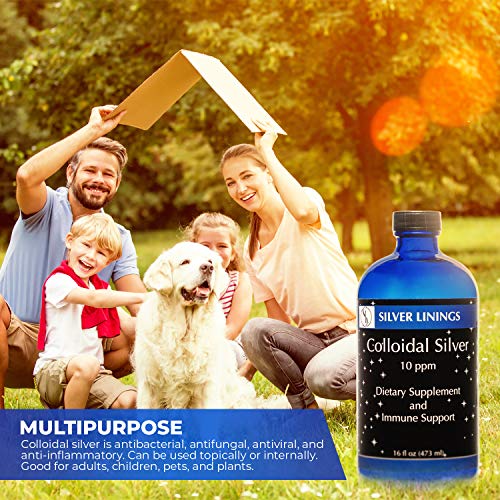


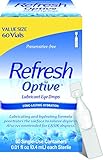
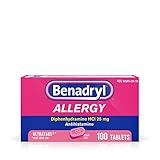

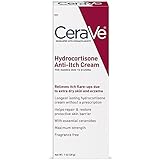
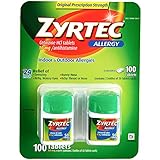
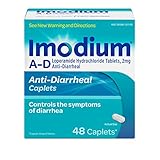

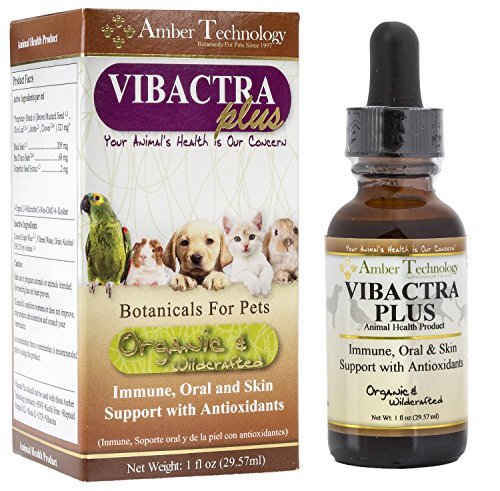



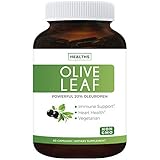

Pingback: Dog Dental Care – The Complete Guide To Dog Oral Hygiene - Dog Products Guide
Pingback: Purina Pro Plan Veterinary Diets HA Hydrolyzed Formula Chicken Flavor Dry Dog Food – Detailed Review - Dog Products Guide